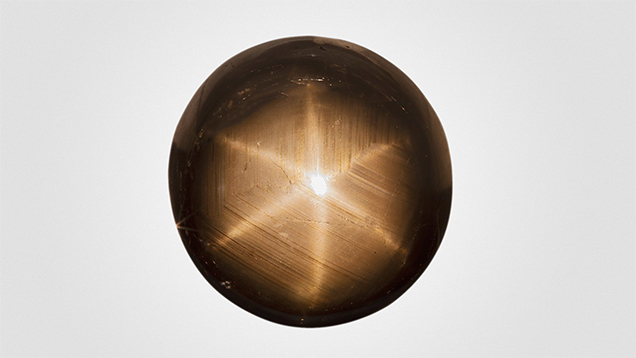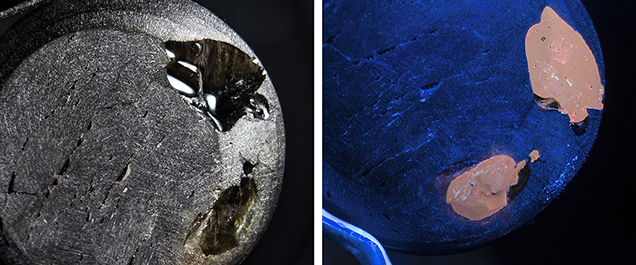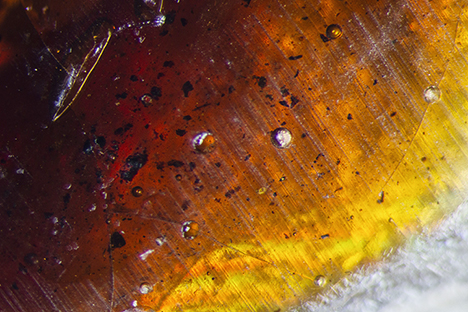Black Star Sapphire with Dual Treatments

Black star sapphires primarily come from Kenya, Australia, and Thailand. Unlike other star sapphires and rubies, the asterism in these stones generally results from the exsolution of ilmenite (FeTiO3) and/or hematite (α-Fe2O3) instead of rutile (TiO2). Rutile and ilmenite/hematite exsolve in different directions: rutile along the second-order hexagonal prism {112̅0} and ilmenite along the first-order hexagonal prism {101̅0}. If both are present in the same stone, a 12-ray star results. The ilmenite/hematite crystals are far more “platy,” and thus their layers tend to form planes of weakness. Breakage along those planes is termed parting. Parting differs from cleavage in that it results from structural planes of weakness due to imperfect growth rather than inherent weakness. There are often two different parting planes in the stones. One corresponds to the exsolution of ilmenite/hematite in the plane of the basal pinacoid {0001}. The other corresponds to planes of exsolved boehmite/diaspore along the rhombohedron {101̅1}.
In Thailand, one often sees cavities on the back of black star sapphires filled in with brown dopping varnish. It is only the basal parting that comes into play with black star sapphires, because the exsolved hematite that causes the lack of adhesion is only in the basal plane. It is because of this parting that the stones get filled with dopping varnish, to conceal large holes in the base. Note that the type of dopping varnish is of a color that matches the stone.

In May 2020, a client submitted a large 75 ct black star sapphire for testing (figure 1). The base of the stone contained two large pits filled with brown dopping shellac (figure 12, left). Interestingly enough, the shellac fluoresced bright orange under long-wave ultraviolet light (365 nm) (figure 2, right). Following the client’s approval, we removed the shellac with alcohol and noticed a curved area exhibiting an unusual flow-like structure that looked suspiciously like glass. Unfortunately, attempting to get a Raman spectrum on the area was unsuccessful.

Careful microscopic examination showed what looked like gas bubbles trapped between the glassy material and the sapphire below (figure 3). Scratching the surface of the cavity with a number 7 hardness point confirmed that the area could not be corundum. Immersing the gem in methylene iodide showed the glassy area to cover roughly two-thirds of the base of the cabochon (figure 4). Energy-dispersive x-ray fluorescence (EDXRF) testing on the area suspected to be glass revealed a lead (Pb) component of over 3%.

A variety of tests were brought to bear on this specimen, from the simple (hardness) to the high-tech (EDXRF). The results of these tests revealed a gem that had been treated by filling with two different substances: glass and dopping varnish.
.jpg)


